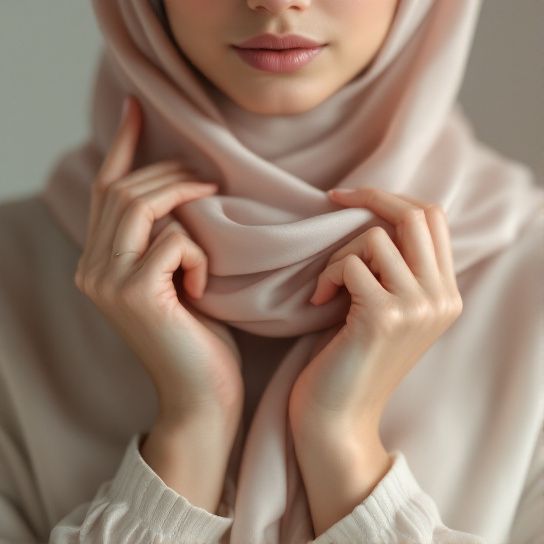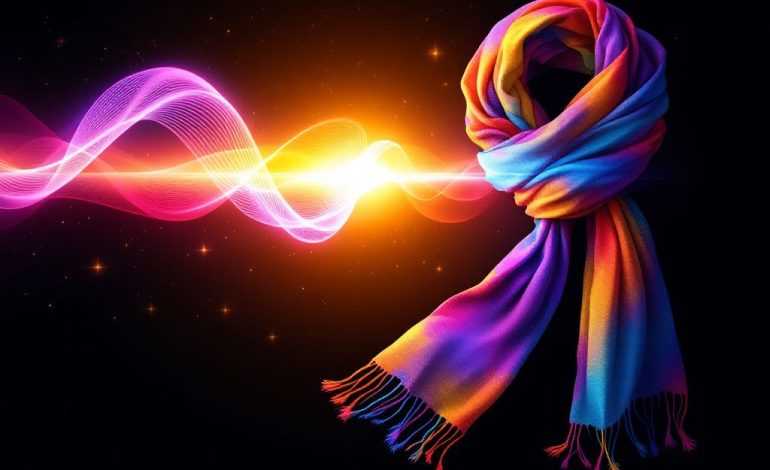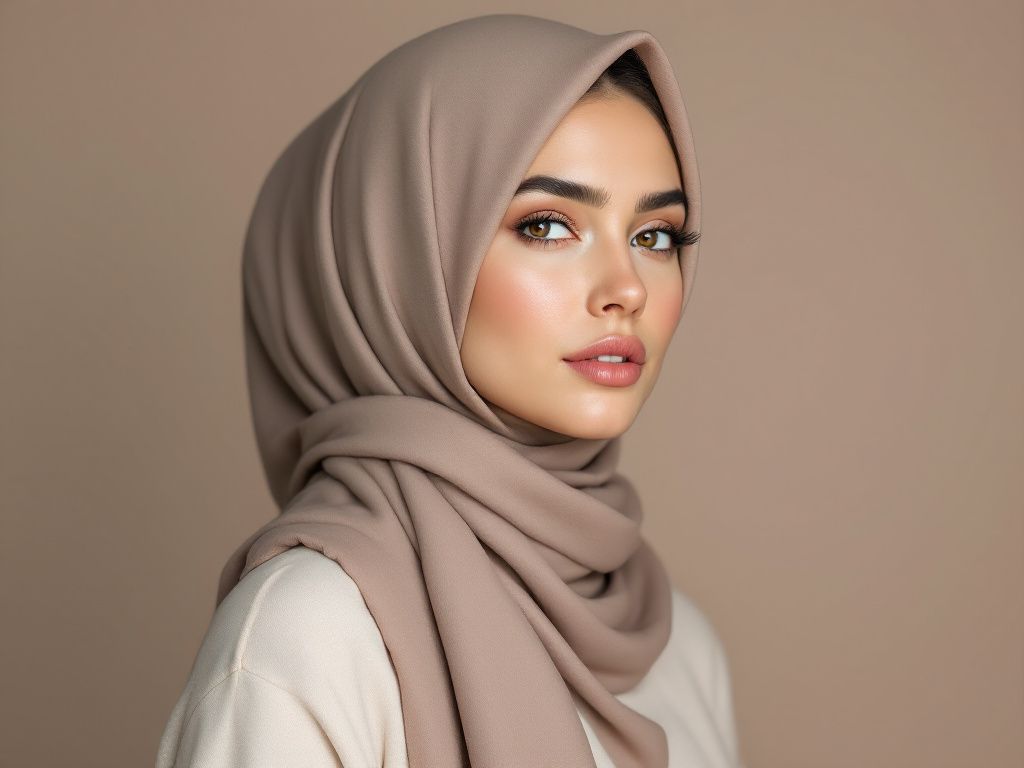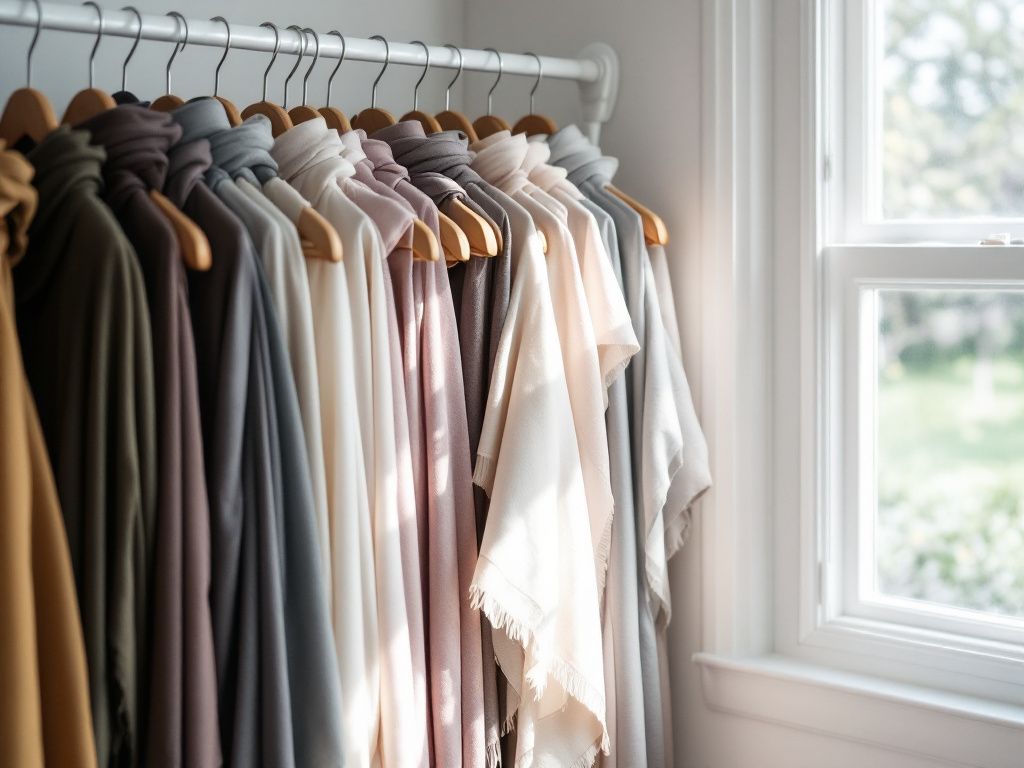Exploring the Art of Holographic Hijabs: A Modern Adventure into Digital Styling
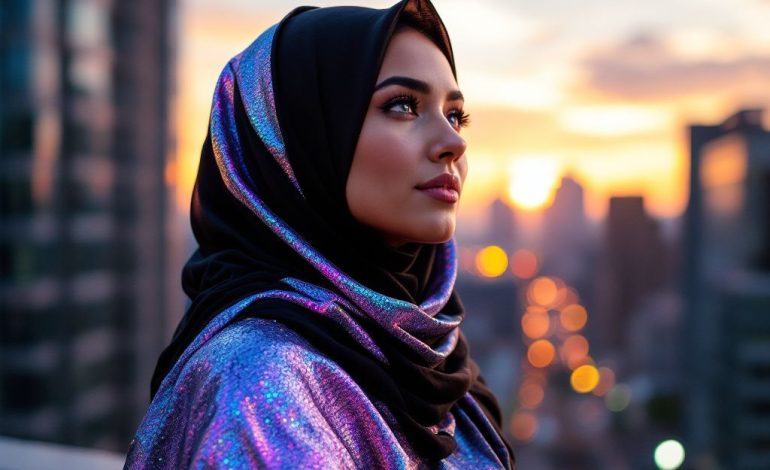
Alright, picture this: you’re scrolling through your feeds, on the hunt for something seriously innovative to level up your modern hijab game. Everything feels a bit too been-there-done-that until—bam!—you stumble upon a stunning holographic hijab design that makes you pause, maybe gasp. It’s artistic, vibrant, and looks like it’s straight out of a digital art fantasy. Instantly, you’re hooked. But the question pops up: how can you create this kind of magic in your hijab style?
The amazing world of digital art offers more than just eye-candy. It opens up a whole new realm of creative expression especially for those passionate about fashion and design—yep, including modern hijabs. Let’s unpack how you can harness this medium to recreate that jaw-dropping, holographic twist in your own styling.
What is Holographic Hijab Art?
Holographic hijab art isn’t just about adding spark or shine (though that’s part of the fun). It’s about blending modern hijab style with digital creativity to transform everyday fabric into a canvas of vibrant, shifting colors that catch the light in mesmerizing ways. Imagine like an art piece that moves with you. This modern method requires an intersection of digital artistry, textile design, and a bold stroke of imagination.
The Rise of Digital Art in Fashion
Digital art is shaking things up across industries—but fashion? It’s downright revolutionary here, especially if you’re looking to add modern flare to traditional styles like the hijab. Through digital tech, artists can create visually stunning textiles that mimic the holographic effect. That’s multiple layers of colors, shades, and yes, a whole lot of style. And it’s not just about aesthetics. Digital art allows for endless customizations, meaning your modern hijab style could offer personalized elements or unique prints no one else has.
How to Create Holographic Hijab Art
Want to get your hands in the paint—or, shall we say, pixels? Even if you’re new to artistic digital styling, don’t sweat it. With some playful exploration, you can dive right in.

Step 1: Find Your Inspiration
First things first. Find that spark. Are you into vibrant street style or classic, muted tones? Look through digital art galleries, Instagram accounts, or explore online courses. Challenge yourself to think big—a swirl of galaxies, a cityscape shimmering with neon lights, or a dreamy blend of watercolors. Remember, inspiration is unique and doesn’t have to fit neatly within a box.
Step 2: Pick Your Tools
Next up, let’s talk digital tools. Yes, the techy part, but don’t run away just yet. With programs like Adobe Illustrator or Procreate, creating amazing designs is super approachable. These platforms support layers and various brushes that can help simulate a holographic effect by strategically blending colors.
If juggling software seems daunting, try online design platforms like Canva, which have friendly interfaces and numerous templates to start with. Trust me, once you get into the swing of it, these tools are pretty exciting.
Step 3: Experiment with Design Elements
Now here’s where you throw paint at the canvas—figuratively speaking! Play around with gradients, blending modes, and transparency. Experimenting is key in finding what vibrates with your vision. Elements like light pathways or radiant bursts can offer the shimmering effect holograms are famous for.
A good start is layering colors with varying opacity. Create focus points with bold, vivid splashes, and then overlay them with softer pastels to construct depth. Loop back to geometric designs—they tend to pop in holographic art. 3D models can also help if you’re taking things further.
Step 4: Render and Refine

After the fun of creating, it’s time to polish up. Unlike painting, refining these designs on digital software is crazily efficient. Adjust brightness or contrast to amplify vibrancy. Fine-tune the holographic elements until they match your taste. You want them to stand out but not overwhelm.
Step 5: Make It Real
Once your digital design is locked, you covert these pixels into reality with textile printers that specialize in digital art prints. Many services allow you to upload your designs. From silk to chiffon, choose fabrics that flow well and hold prints vividly—natural options often work best.
Personalizing Your Modern Hijab Design
Okay, real talk moment: digital tools offer customization magic you don’t want to miss. Whether you’re drawing straight on a tablet or pasting shapes onto an app, you’ve got the potential for deeply personal aesthetics. Explore adding initials, meaningful quotes, or symbols that tell a story. It’s your modern hijab; make it truly yours!
Starting Points for a Customized Look:
- Color Schema: Opt for color mixes you connect with, not just what’s trendy.
- Design Signature: Create a motif or icon that represents you.
- Embedded Story: Show cultural or personal narratives with pattern designs.
Mistakes You Should Dodge

Admittedly, even the pros face hiccups. Selective attention to potential pitfalls guides you much more gracefully through this creative pursuit.
- Complicated Designs: Resist overloading with layers; instead, aim for balance.
- Ignoring Fabric Type: Choose textiles that complement your design, enhancing rather than dulling it.
- Resolution Errors: A design’s sharp quality is crucial. Low resolutions spoil all your hard work.
The Impact on Modern Hijab Fashion
Here’s the beauty dive: holographic hijab art is elevating an age-old tradition into contemporary vogue without sacrificing cultural roots. Wearables now bear powerful statements of pride, progress, and rich personal history. Showcasing vibrant aesthetics reflects a unity of modern technology and traditional elegance—a perfect dialogue of then meets now.
An Open Door to Creative Communities
Sharing achievements and gaining feedback from peers goes a long way. Consider joining digital art or fashion forums. Social media platforms can also introduce you to groups passionate about both digital artistry and modern styles. It’s inspiring, and yes, perhaps even comforting, to find like-minded enthusiasts supporting each other.
Well, The Wrap-Up
Fearlessly dive into exploring what digital art has in store. This evolving digital age creates rich pathways for modern hijab transformation that’s flirtatious, experimental, and deeply introspective. Sure—you stumble sometimes, lines blur—but isn’t art always a workspace of “mistakes”?
Remember, artistic endeavors like these are supposed to be fun, an extension of who you are. Whether for fashion statements or personal journeys, deliver it with a pinch of daring. You’re not just weaving threads; you’re painting—no brush required. Enjoy creating something beyond beautiful, with a spirit that’s distinctly you.
Frequently Asked Questions
What is the modern hijab, and how has it evolved?
The modern hijab refers to the contemporary styles and interpretations of the traditional head covering worn by Muslim women. It has evolved significantly, blending modesty with modern fashion trends, including bold colors, unique fabrics, and various styling options such as turban styles, layered hijabs, and loose draping. This evolution reflects a fusion of cultural heritage and contemporary style, making hijab fashion more diverse and accessible[2][4].
What are the key trends in modern hijab fashion for 2025?
In 2025, modern hijab fashion trends include the use of sustainable fabrics, bold patterns and prints, layered looks, oversized styles, metallic and shimmering fabrics, sporty hijabs, and monochrome or minimalist designs. Additionally, embellished hijabs with beads, sequins, and embroidery are popular for festive occasions. The incorporation of luxury fabrics and creative styling tips, such as pairing patterns with solids and layering, are also key trends[2].
What are the Islamic guidelines for wearing the hijab?
According to Islamic guidelines, the hijab should cover the whole body, excluding what is exempted. It should not be an adornment in itself, must be thick and not transparent, and should be loose-fitting. The hijab should not resemble men’s or non-Muslim garments and should not be perfumed. It is also important that the hijab does not serve as a garment of fame or vanity[3].
Why do Muslim women wear the hijab, and is it a requirement in Islam?
Muslim women wear the hijab as a symbol of modesty and faith. While it is not one of the five pillars of Islam, there is consensus among Islamic scholars that both men and women should dress modestly. The extent of women’s covering, however, is subject to interpretation. The hijab is worn based on interpretations of Islamic law, geographic location, civil law, and personal choice[5].
References